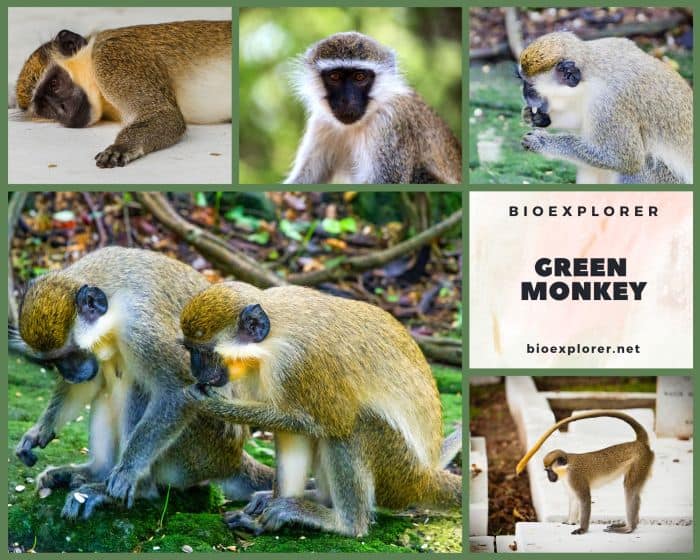
| Animalia | Primates | Cercopithecidae | Chlorocebus | Chlorocebus sabaeus |
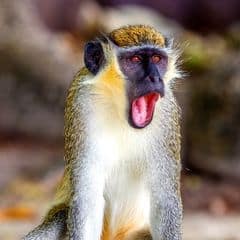

- Common Name: Green Monkey
- Taxonomy Classification Year: 1766
- Monkey Size: 30 to 50 cm (11.81 to 19.69 in)
- Skin Color(s): Golden-green
- Habitat: Savanna or grassland, forest, scrub forest
- Diet: Herbivorous
- Native Countries: Senegal, Ghana
Green Monkey Distribution
Green Monkey Characteristics
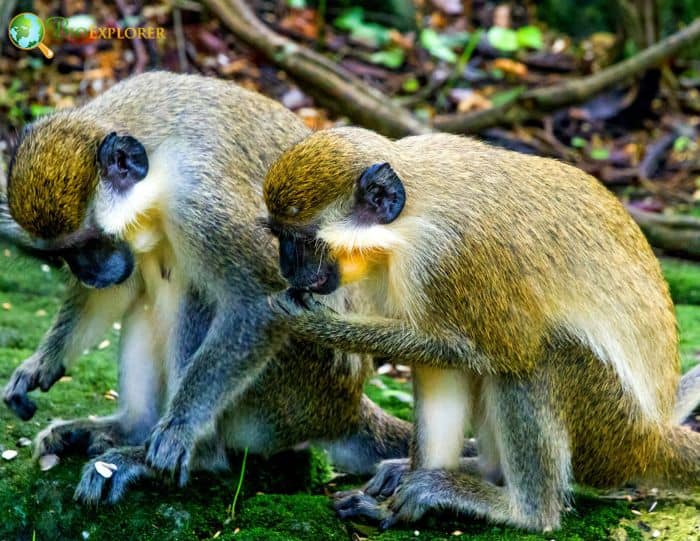
The green monkey[1] (Chlorocebus sabaeus), also called the sabaeus monkey, is an Old World monkey with golden-green fur, pale feet, and hands.
- These medium-sized monkeys are draped in dense, green-tinged, golden fur, hence their common name, green monkeys.
- The face is hairless but covered with dark blue fur outlined by a smooth line of white fur.
- Like other monkeys, Green monkeys have long, thin, semi- prehensile tails. In addition, male and female species are sexually dimorphic.
- Males can weigh between 4 and 8 kg and reach an average length of 50 cm.
- Adult females typically weigh between 3.5 and 5 kg and are around 450 mm long. The color scheme is said to feature a prominent “red-white-blue” display.
What Do Green Monkeys Eat?
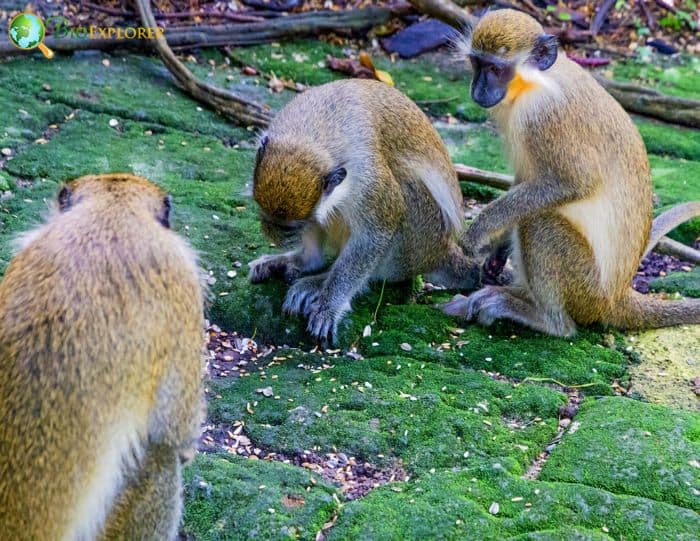
The Green Monkey feeds on[¶] many food sources including:
- Fig (Ficus)
- Hairy Rock Fig (Ficus glumosa).
- Leaf Flower (Phyllanthus)
- Sacred Garlic Pear (Crateva religiosa).
- Chinalaurel (Antidesma)
- Ebony Diospyros (Diospyros mespiliformis).
- Ohia (Celtis zenkeri)
- Chinese Banyan (Ficus thonningii).
- Guanabanilla (Ouratea striata)
What Eats Green Monkeys?
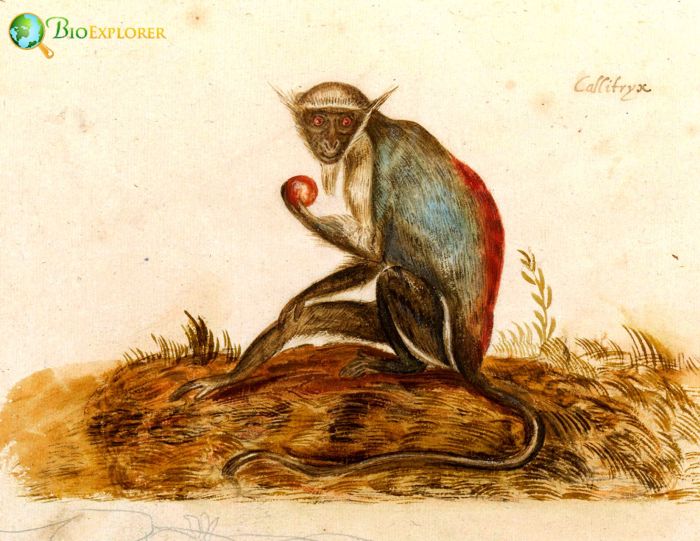
In the wild, Leopards (Panthera pardus) and Lions (Panthera leo) prey on Green Monkeys[§].
Green Monkey Facts
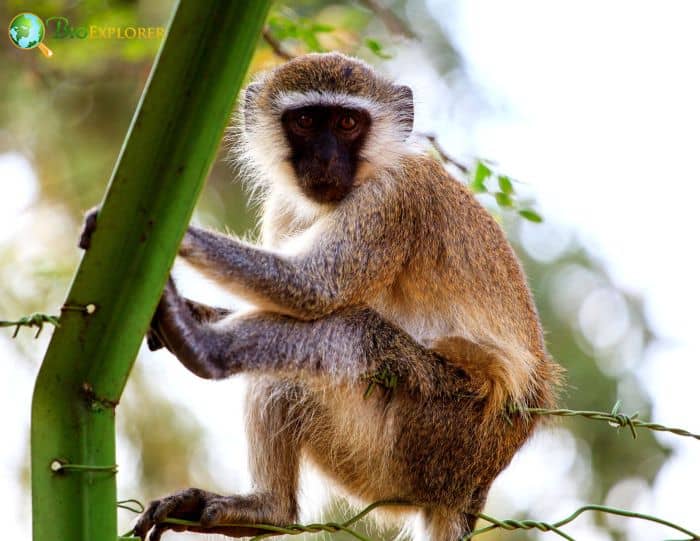
- Green monkeys’ locomotion varies little, regardless of substrate or habitat. In nearly all circumstances, they move quadrupedally in the treetops or on the ground.
- They are relatively light and can travel nimbly on branches using all four limbs.
- It does not have a distinctive fur band on its forehead like other Chlorocebus species, and the males have a light blue scrotum.
- They have distinct vocalizations to warn others in the predator pack and even have specific calls for certain predators.
- Body language, such as displaying colorful genitals, is also used to communicate danger and establish dominance.
Suggested Reading: Every Type of Monkey
Cite This Page
APA7MLA8Chicago
BioExplorer.net. (2025, October 31). Green Monkey. Bio Explorer. https://www.bioexplorer.net/animals/mammals/monkeys/green-monkey/.
BioExplorer.net. "Green Monkey" Bio Explorer, 31 October 2025, https://www.bioexplorer.net/animals/mammals/monkeys/green-monkey/.
BioExplorer.net. "Green Monkey" Bio Explorer, October 31 2025. https://www.bioexplorer.net/animals/mammals/monkeys/green-monkey/.











